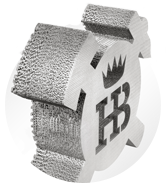Markets such as the Middle East, Asia and the ASEAN region – including Malaysia, Singapore, Thailand, Indonesia and the Philippines – became increasingly important.
In 1979, for example, the largest order to date was placed by the Japanese equipment manufacturer Kawasaki for 22 ROTO-PACKER facilities with 36 loading conveyors and 16 bulk loading systems for four cement plants in Asia and Africa.
Construction of the world’s largest cement terminal at the time – with an annual output of 700,000 tons in Yanbu, Saudi Arabia – stood out among the numerous deliveries to Middle Eastern countries. In cooperation with the Swedish company Cementa AB, Haver & Boecker supplied the complete turnkey plant – from conveyor belts, silo feeding and emptying, packaging and loading to workshop and spare parts store. The largest HB project to date had a delivery value of DM 10.46 million. The terminal was put into operation on February 7, 1979.
There was a real cement boom in Southeast Asia at the end of the 1980s and in the 1990s. The largest deliveries in these years included nine ROTO-PACKER lines for the Thai Polene Company (TPI for short) for 7,200 tons per day, nine ROTO-PACKER facilities for 2.3 million tons per year at Semen Tonasa on Sulawesi/Indonesia – the largest single order in the company’s history with a volume of DM 20 million – and last but not least 20 ROTO-PACKER lines for the world’s largest packing plant at Siam City Cement in Thailand for 44,000 bags per hour.





